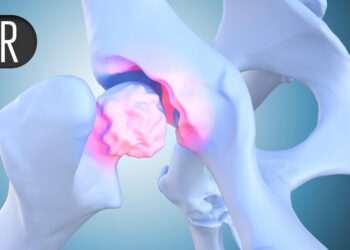TOPLINE:
A larger thymus size at 2 months of age, possibly indicating greater T-cell development, was associated with a more than sixfold increased risk for atopic dermatitis (AD) within the first 2 years of life. The association remained significant for early-onset AD before 6 months, with an elevated thymus size increasing the risk by more than five times.
METHODOLOGY:
- Researchers conducted a prospective study of 300 term-born infants recruited from the maternity ward at Rigshospitalet in Copenhagen, Denmark, between August 2017 and August 2019 to examine whether the size of the thymus during infancy is associated with the onset and severity of AD during the first 2 years of life.
- Of the 300 enrolled infants, 290 were examined and followed up for 2 years. Transsternal ultrasound scans were used to measure the thymic index at birth and 2 and 12 months of age, and the Eczema Area and Severity Index (EASI) score was used to assess the severity of AD.
TAKEAWAY:
- The 2-year cumulative prevalence of AD was 34.1% (95% Cl, 28.7%-39.6%).
- An elevated thymic index at 2 months of age was associated with a sixfold higher risk for AD within the first 2 years of life (adjusted hazard ratio [aHR], 6.32; P < .001).
- Infants with a high thymic index at 2 months of age had a fivefold higher risk for early-onset AD within the first 6 months of life (aHR, 5.35; P < .001).
- A moderate positive correlation was observed between the thymic index and EASI score at 2 months of age (correlation coefficient, 0.39); however, no correlation was observed at birth or 12 months of age.
IN PRACTICE:
“[The study] findings remained significant after adjusting for FLG [filaggrin] mutations and family history of atopic diseases, suggesting that thymic size may represent an independent risk marker for AD, irrespective of genetic predisposition to atopy,” the authors of the study wrote.
SOURCE:
Jacob P. Thyssen, MD, PhD, with the University of Copenhagen, Copenhagen, Denmark, was the corresponding author of the study, which was published online on July 29 in Allergy.
LIMITATIONS:
The overrepresentation of AD cases, variations in the quality of ultrasound scans, and the measurement of the thymic size alone may have limited outcomes and generalizability.
DISCLOSURES:
This study received financial support from the LEO Foundation, Lundbeck Foundation, Novo Nordisk Foundation, Kgl Hofbundtmager Aage Bangs Foundation, and Herlev and Gentofte Hospital Research Foundation. Several authors reported receiving research grants and honoraria and serving as speakers/consultants or advisors to these and other pharmaceutical companies. Three authors are current employees of the funding companies.
This article was created using several editorial tools, including AI, as part of the process. Human editors reviewed this content before publication.
Source link : https://www.medscape.com/viewarticle/enlarged-thymus-2-months-linked-higher-risk-atopic-2025a1000ktt?src=rss
Author :
Publish date : 2025-08-06 02:24:00
Copyright for syndicated content belongs to the linked Source.














